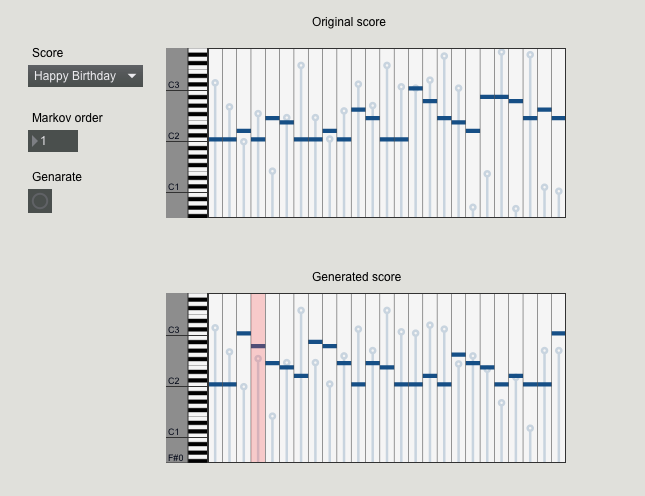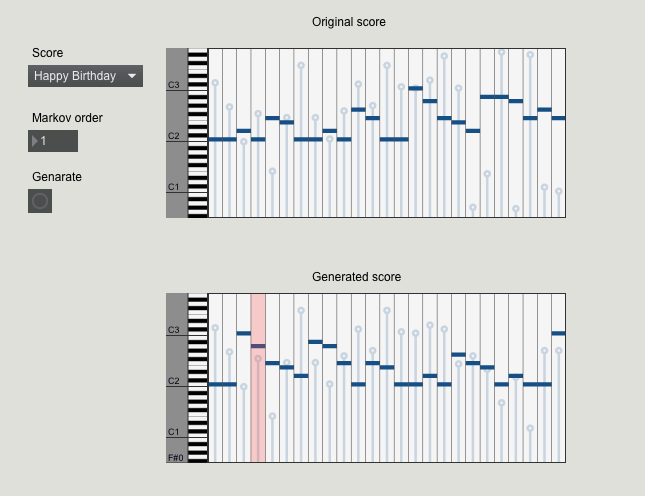MarkowKetten Explorer
- Title
- MarkowKetten Explorer
- Year
- 2017
- Copy Number
- 011
- Medium / Material / Technic
- interactive sound installation, computer, mouse, monitor
Markov chains, named after the Russian mathematician Andrey Markov, are stochastic processes that connect random and rule-based properties. Applied to music, this means that patterns or melodies that have been varied beyond recognition can be changed or even reproduced exactly.
A Markov process is initiated through an analysis. Take, for example the Alberti bass, an accompaniment figure in classical music that was used frequently by Beethoven and Schubert: following the pattern of C, G, E, G, C, G, E, G, etc., the analysis determines that there is a 100% chance that a C will be followed by a G, a 50% chance that a G will be followed by a C and a 50% chance that it will be followed by an E, and a 100% chance that an E will be followed by a G. This means that the rules are as follows:
C 100% -> G
G 50% -> C
G 50% -> E
E 100% -> G
If these rules are applied by a computer, a sound figure is created that is similar, but not identical, to the Alberti bass.
For a second-order Markov chain, the analysis is refined through a more precise description of the past.
C, G 100% -> E
G, E 100% -> G
E, G 100% -> C
G, C 100% -> G
This is significantly more precise than the simulation in the analysis above, and in the cases of the Alberti bass it leads to an exact reproduction of this structure.
In »MarkowKetten Explorer« [Markov Chain Explorer], visitors can input melodies and reproduce them roughly or identically by means of the rules analyzed. Through the juxtaposition of the original melody and the »reproduction« generated by applying the rules, it is possible to experience the operating principles of Markov chains acoustically.
Production of the ZKM_Hertz-Lab
Idea: Ludger Brümmer
Programming, interface design: Benjamin Miller, Sami Chibane

